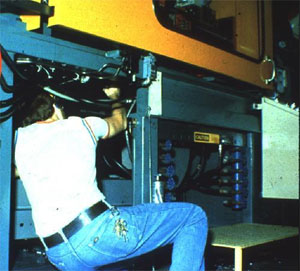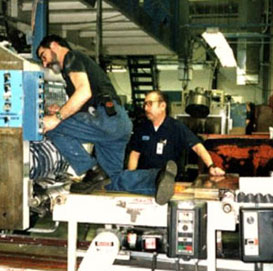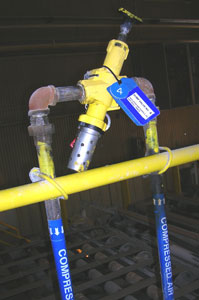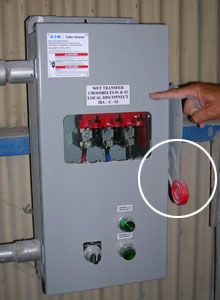Definitions
What is Required from T8CCR 3314?
What is Lockout?
- Lockout means the use of devices, positive methods and procedures to effectively isolate or secure prime movers (the source of mechanical power), machinery and equipment from hazardous energy sources. Examples of hazardous energy sources include mechanical, hydraulic, pneumatic, chemical, electrical, thermal, and other sources.
What Activities are Included in Lockout/Tagout?
- Cleaning, repairing, servicing, setting-up, adjusting, and unjamming prime movers, machines, and equipment.
Which Employees are at Risk of Injury?


- Employees risk of injury from equipment and machines varies depending on what they are doing. There are two categories of employee:
- Authorized Employees or Persons - A qualified person who locks out or tags out specific machines or equipment in order to perform cleaning, repairing, servicing, setting-up, and adjusting operations on that machine or equipment. An Affected Employee becomes an Authorized Employee when that employee's duties including performing cleaning, repairing, servicing, setting-up, and adjusting operations covered under this section.
- Affected Employees - An employee whose job requires them to operate or use a machine or equipment on which cleaning, repairing, servicing, setting-up or adjusting operations are being performed under lockout or tagout, or whose job requires the employee to work in an area in which such activities are being performed under lockout or tagout.
What are normal Production Operations?
- Using machines or equipment to perform their intended production functions.
What is a Prime Mover?
- The source of mechanical power for a machine.
Note - for a definition of a Qualified Person see Other Definitions
Best Practices - Other Definitions in addition to those in T8CCR 3314
Cord and Plug Connected Equipment: Equipment where the only energy source is electrical power provided by a plug in connection.
Energized: Connected to an energy source or containing residual or stored energy.
Energy Isolating Device: A mechanical device that physically prevents the transmission or release of energy. This includes: Valves, Breakers, Switches; Blank Flanges for piping systems; Restraining Devices to prevent movement of parts; etc.

Pneumatic energy isolating device - can be locked and bleeds off downstream residual pressure

Electrical energy isolating device (480 volts)
Hydraulic Energy: The energy derived from the motion and pressure of a liquid, such as water or oil.
Mechanical Energy: The energy of moving parts of a machine.
Pneumatic Energy: The energy derived from the motion and pressure of a gas, such as air.

Pneumatic and hydraulic Energy
Potential Energy: The stored energy that can be drawn upon to do work (e.g., suspended loads and compressed springs).
Qualified Person, Attendant or Operator (as per T8CCR 3207): A person designated by the employer who by reason of his training and experience has demonstrated his ability to safely perform his duties and, where required, is properly licensed in accordance with federal, state or local laws and regulations.


